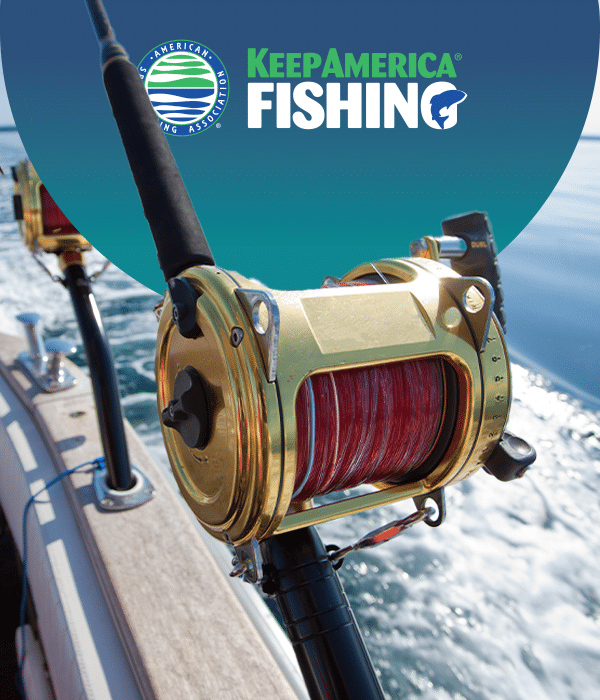Used for waterproof, non-stick and stain-resistant applications, PFAS are used in many everyday products.
While little information exists on the use of PFAS in tackle and other sportfishing products, ASA recommends members contact suppliers to assess whether products may contain regulated chemicals. As federal and state lawmaking on PFAS continues, ASA will proactively monitor policy developments to gauge impacts on industry members. While ASA cannot offer its members legal services, ASA members can leverage these resources, as well as ASA staff, to answer questions and be connected with resources.
To ensure compliance in a changing regulatory climate, ASA recommends its members take the following steps:
- Engage and communicate with suppliers to gauge the use of PFAS in your products.
- Assess your company’s exposure to disclosure and phaseout requirements.
- Consider and explore chemical and material alternatives.
- Assess and inventory chemicals used in products, inputs and sub-components.
- Identify products affected by regulations and products eligible for exclusions and extensions.
- Prepare to comply with notification and labeling requirements.
- Monitor existing and potential regulations to ensure compliance and prepare for new disclosure and phaseout requirements.
Guidelines for ASA Members and Substitution Resources
Emerging research and state regulations are prompting many companies in the industry to examine the use of PFAS in their businesses. This page offers guidance and resources to help your company understand these chemicals and new regulations.
Given the challenge of compliance with recent rulemaking and an emerging focus on the impacts of PFAS chemicals, some businesses are assessing the use of PFAS in their products and considering alternatives.
As federal and state lawmaking on PFAS continues, ASA will proactively monitor policy developments to gauge impacts on members. While ASA cannot offer its members legal services, ASA members can leverage these resources, as well as ASA staff, to answer questions and be connected with resources.
To ensure compliance in a changing regulatory climate, ASA recommends its members take the following steps:
- Engage and communicate with suppliers to gauge the use of PFAS in your products.
- Assess your company’s exposure to disclosure and phaseout requirements.
- Consider and explore chemical and material alternatives.
- Assess and inventory chemicals used in products, inputs and sub-components.
- Identify products affected by regulations and products eligible for exclusions and extensions.
- Prepare to comply with notification requirements.
- Monitor existing and potential regulations to ensure compliance and prepare for new disclosure and phaseout requirements.
WEBINARS
PFAS Reporting Requirements – Understanding Your Potential Obligations
In late 2023, the EPA finalized a PFAS Reporting Rule under the Toxic Substances Control Act. Under that rule, companies must report PFAS manufactured or imported into the U.S. between 2011 and 2022. This includes PFAS that was imported as a part of a product. Companies must undertake due diligence to search their records on the topic and ultimately report any information “known or reasonably ascertainable” to them.
With reporting due in less than a year, many in our industry have questions about this important topic. To help with this, ASA hosted a webinar on August 22, 2024 to provide our members with an overview of this important issue.
In this video, James Pollack, regulatory lawyer at Marten Law, shares his extensive knowledge of PFAS regulatory compliance at the federal and state levels.
Consumer Product Regulations
Several states and the EPA have enacted regulations on PFAS in consumer products, including restrictions on the use and quantity of PFAS in products, and requirements for manufacturers to disclose the use of PFAS.
Below is a list of laws and regulations that may impact ASA member businesses. As additional laws and regulations go into effect, ASA will alert our members and update the list below.
January 1
2025
- California bans sale of textiles with intentionally added PFAS and on textiles ≥ 100 ppm total organic fluorine
- New York bans sale of apparel with intentionally added PFAS, excluding apparel designed for severe wet conditions
- Colorado requires labeling on apparel made for severe wet conditions with PFAS to be labeled
July 1
2026
- Minnesota requirers manufacturers to notify MPCA of products containing intentionally-added PFAS
- Connecticut requires manufacturers to label and report to DEEP on the presence of intentionally added PFAS in apparel and other products
October 13*
2026
- EPA requires one-time reporting on the uses, production volumes and other information on PFAS and PFAS-containing articles manufactured or improted since January 1, 2011. Small businesses meeting criteria have until April 13, 2027 to report.
* Proposed changes would exempt reporting on PFAS in articles at below 0.1% concentrations and PFAS imported as part of an article.
January 1
2027
-
New Mexico requires manufacturers and importers of products with intentionally added PFAS to to label producs and report product details, the purpose of PFAS and other information to NMED.
April 13*
2027
- EPA requires small businesses to complete one-time reporting on the uses, production volumes and other information on PFAS and PFAS-containing articles manufactured or improted since January 1, 2011.
* Proposed changes would exempt reporting on PFAS in articles at below 0.1% concentrations and PFAS imported as part of an article.
January 1
2028
- California lowers ban on TOF concentrations in apparel to 50 ppm.
- Colorado bans PFAS in textiles previously subject to labeling requirements.
- New York extends ban on the sale of apparel containing intentionally added PFAS to outdoor apparel for severe wet conditions.
- Vermont enforces restrictions on PFAS TOF concentrations above 50 ppm in outdoor apparel for severe wet conditions.
- Connecticut bans the sale of intentionally added PFAS in previously-labeled products.
January 1
2029
-
Maine bans intentionally added PFAS in outdoor apparel for severe wet conditions unless labeled as containing PFAS.
January 1
2032
- Maine bans intentionally added PFAS in all products unless DEP deems the use “currently unavoidable.”
- Minnesota bans the sale of any product containing PFAS. The MPCA may specify products or product categories exempt from this ban, where the use of PFAS is “unavoidable.”
- New Mexico bans the sale of all products with intentionally added PFAS unless specifically exempted
For more information, contact:










